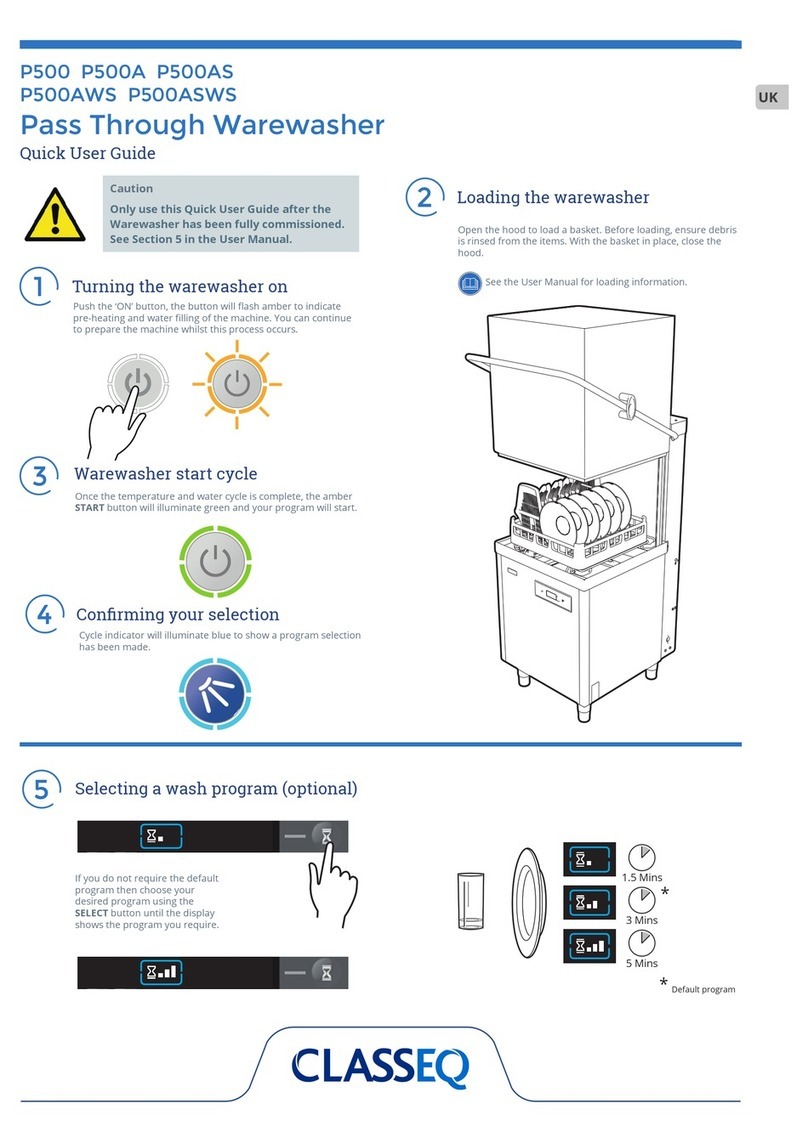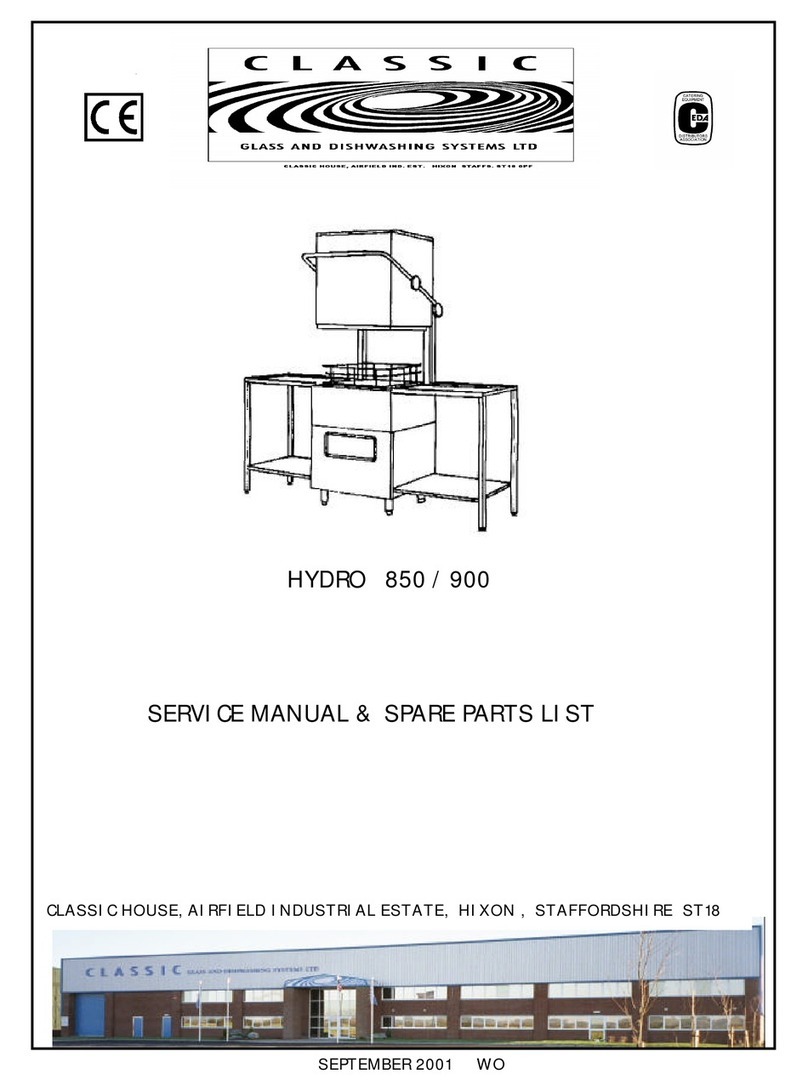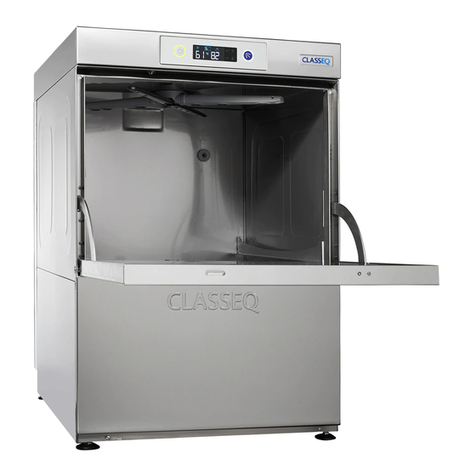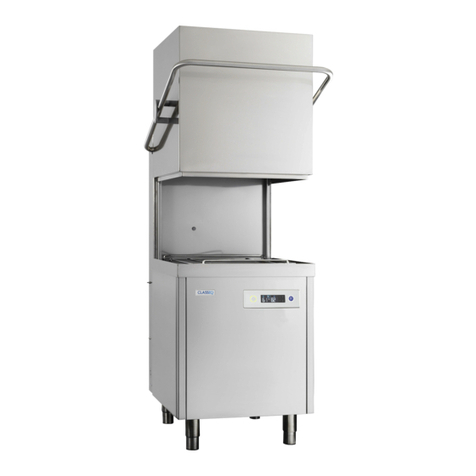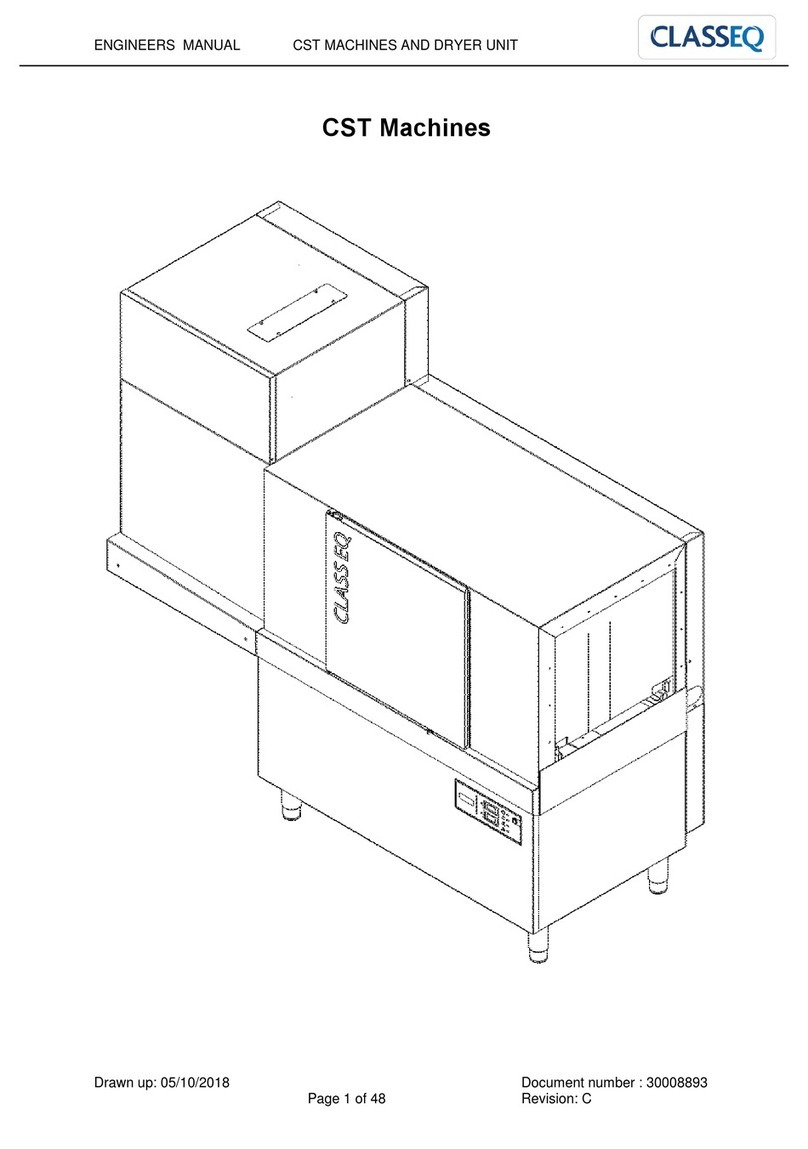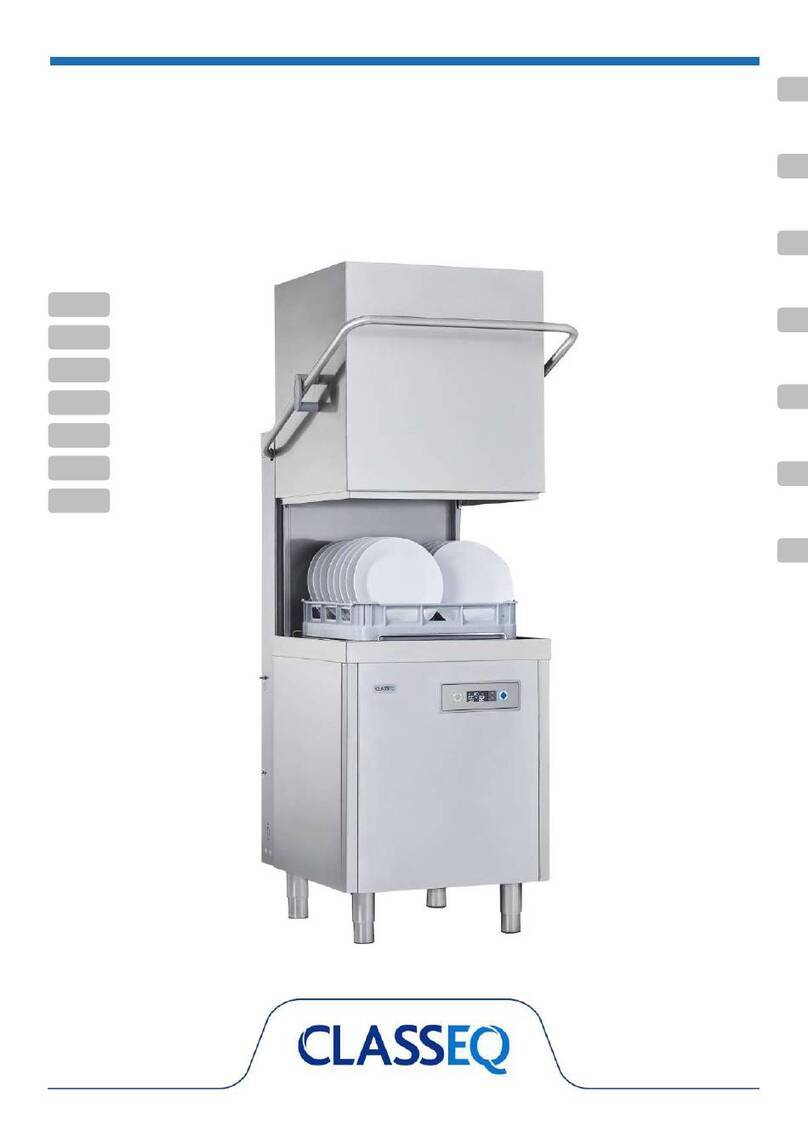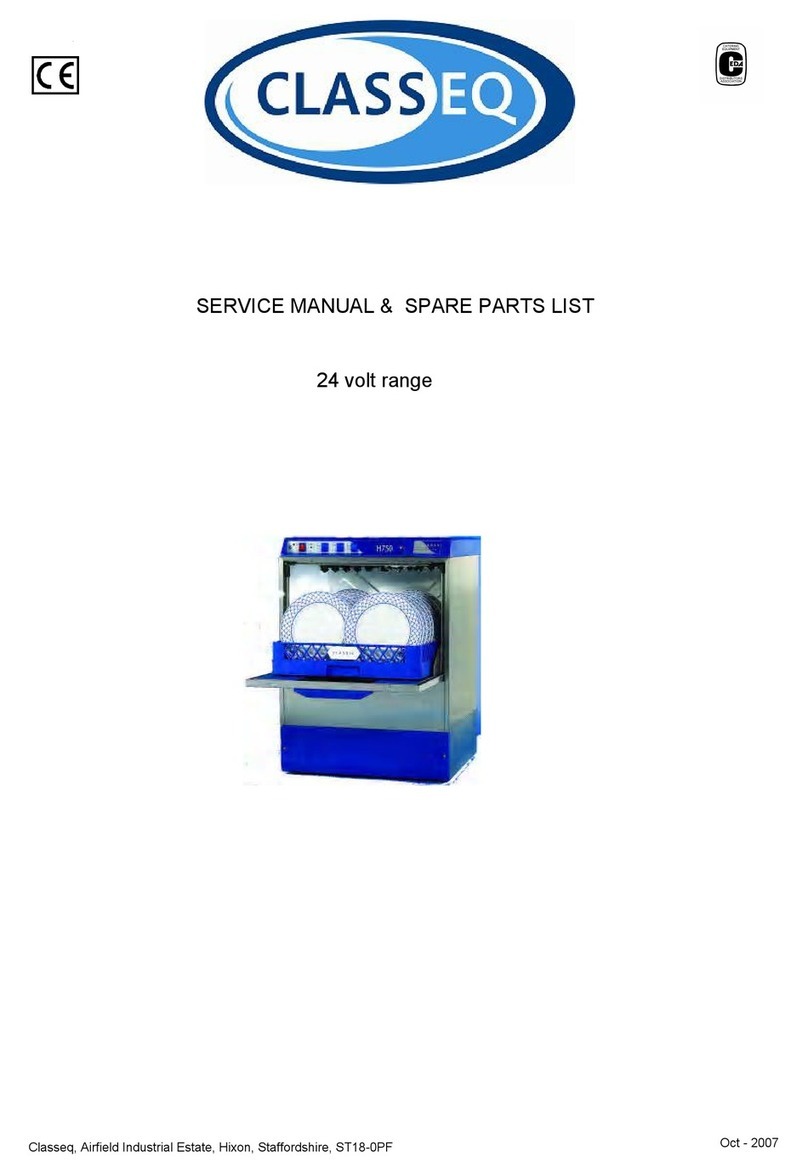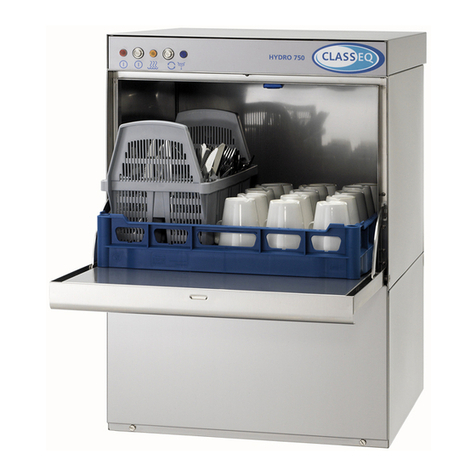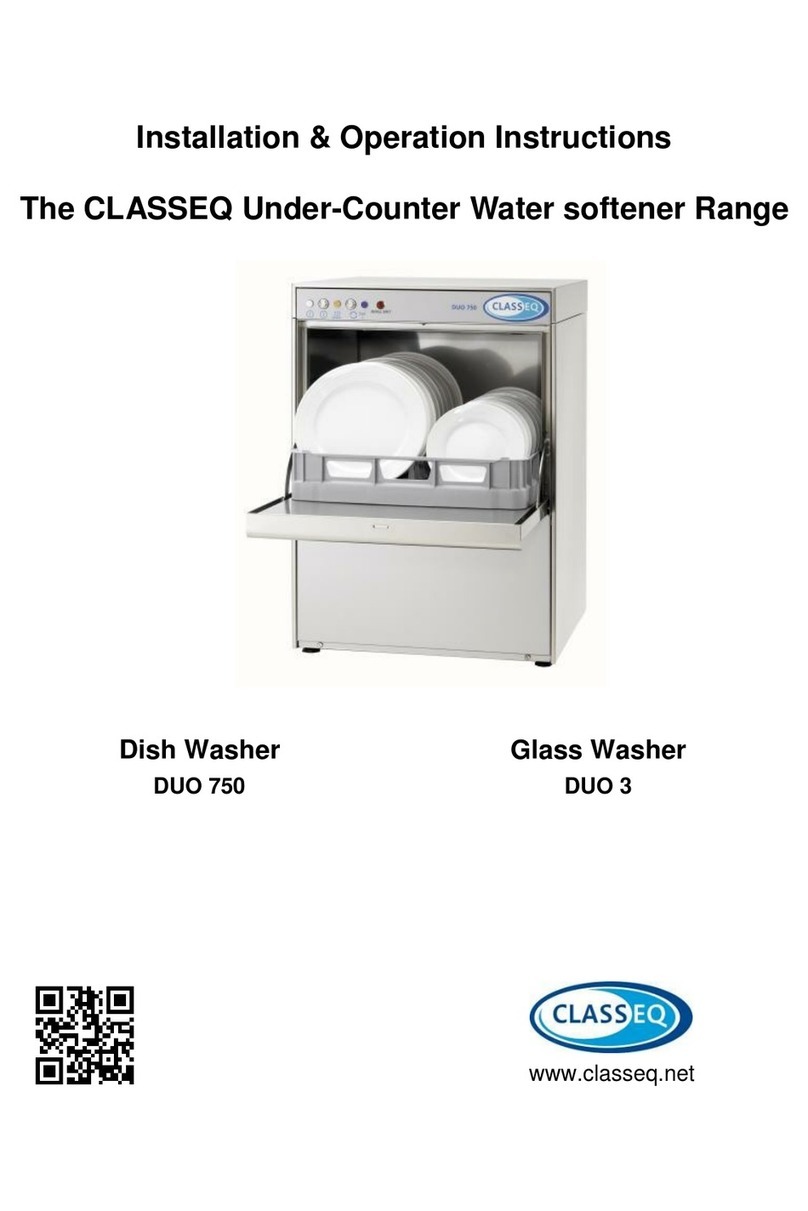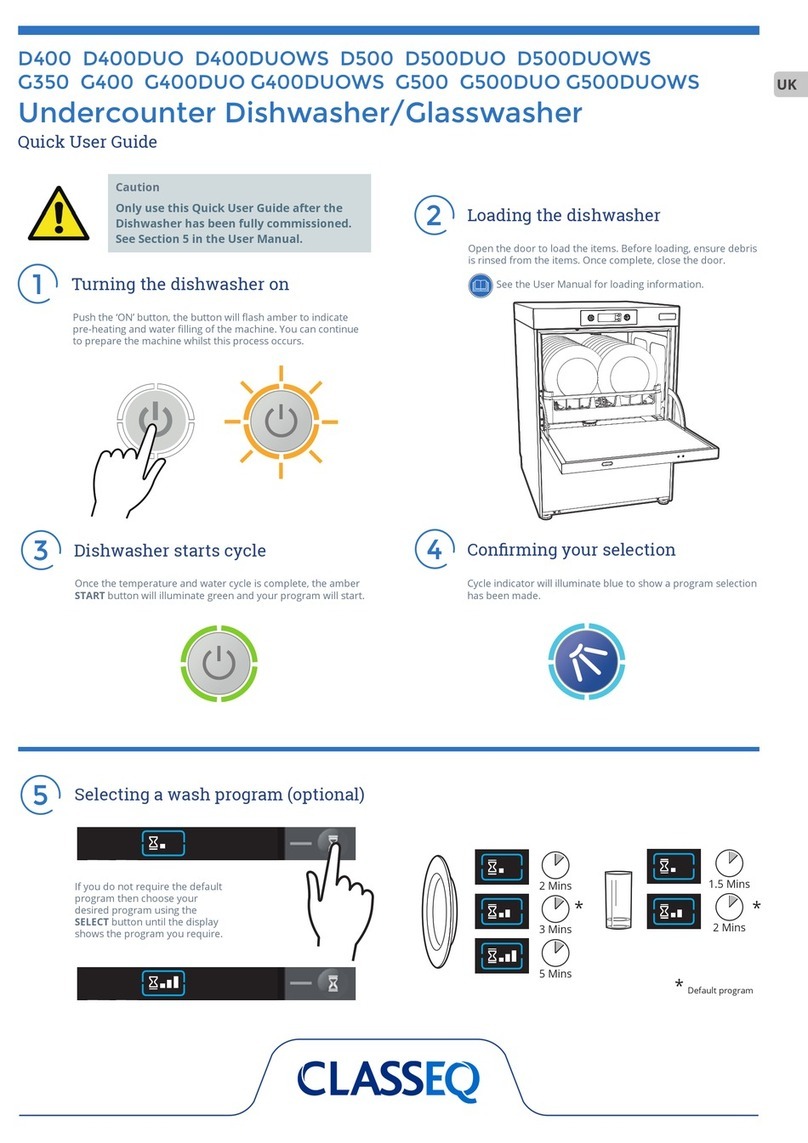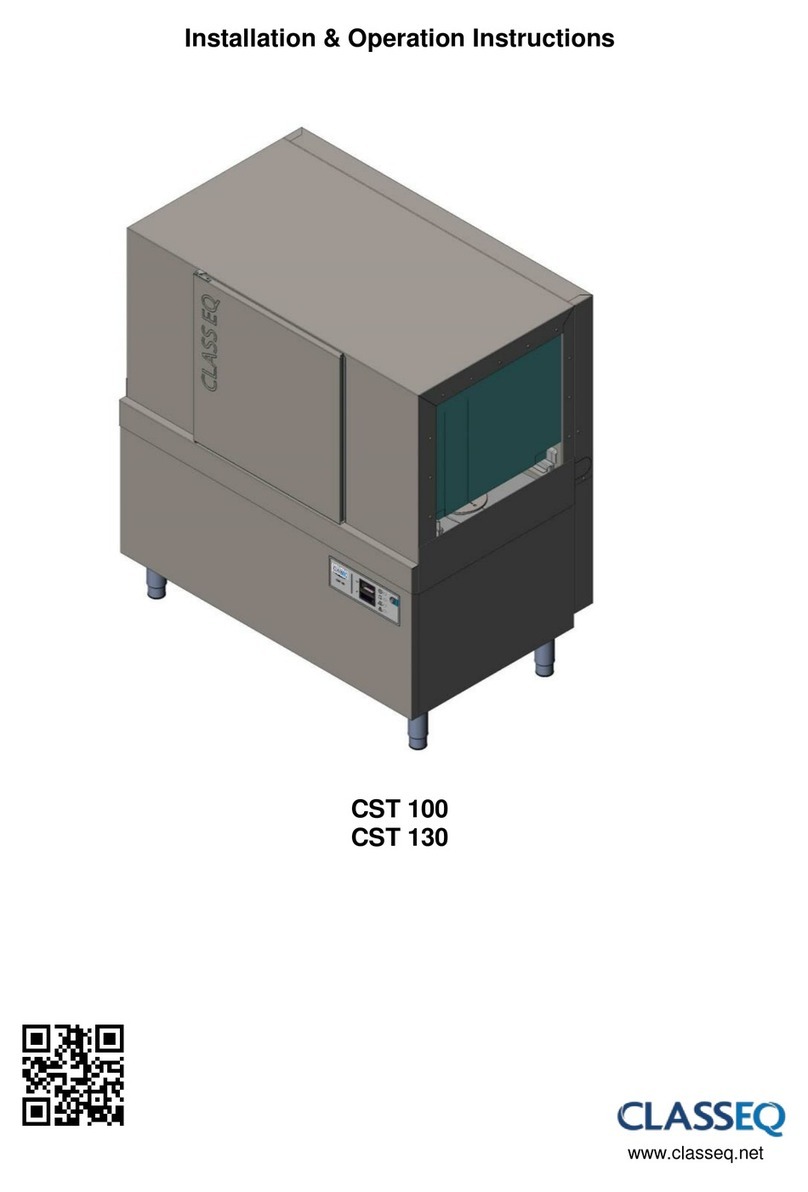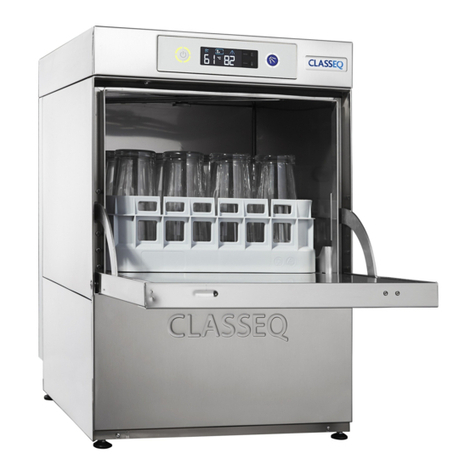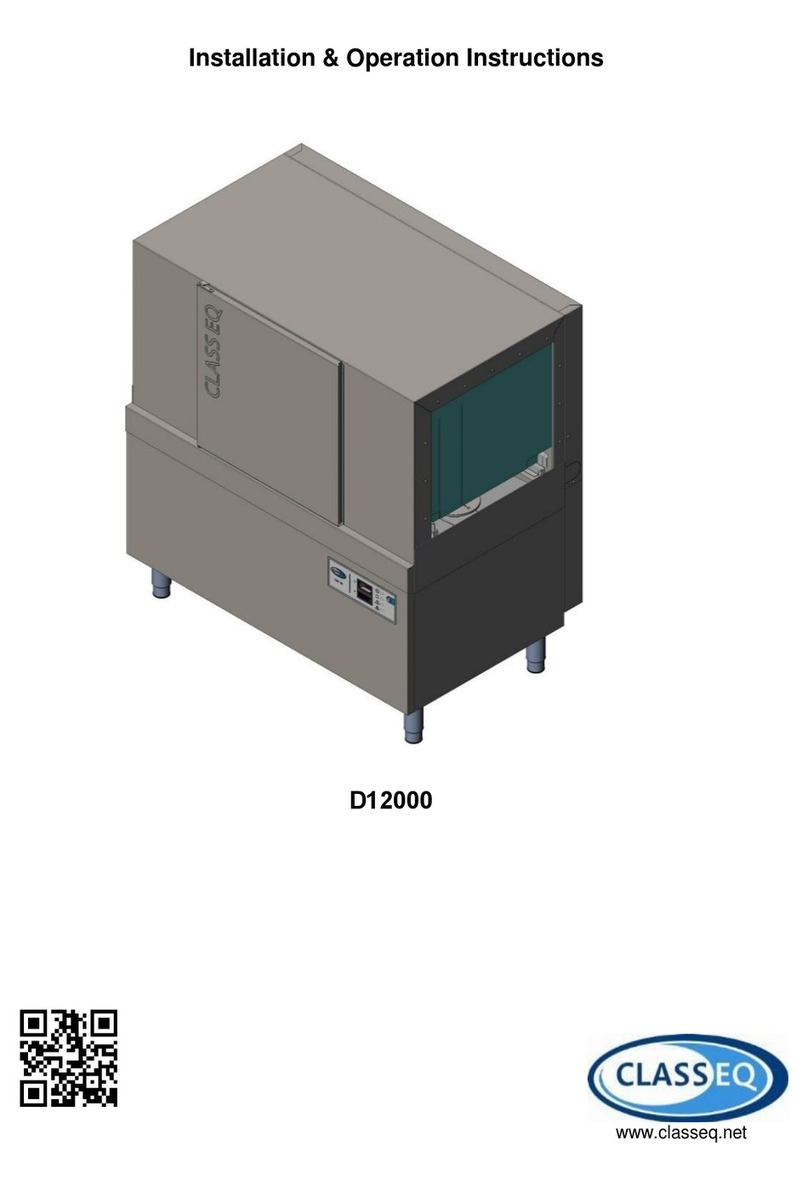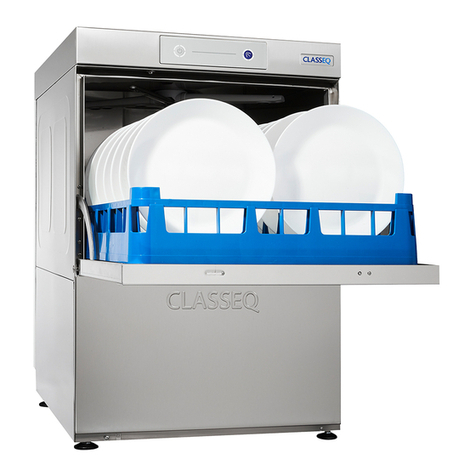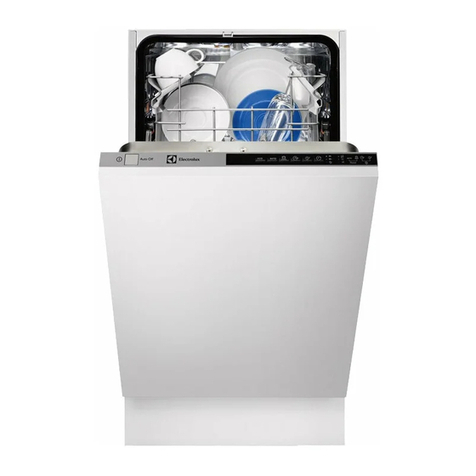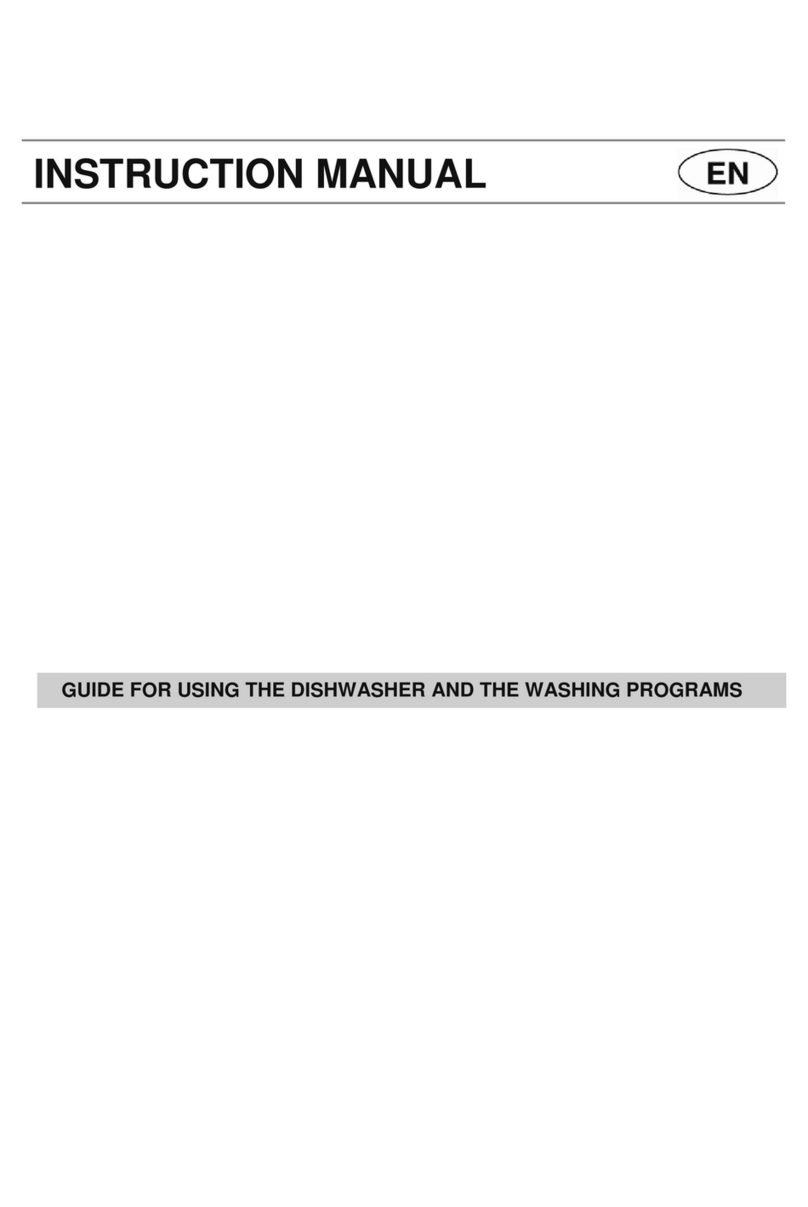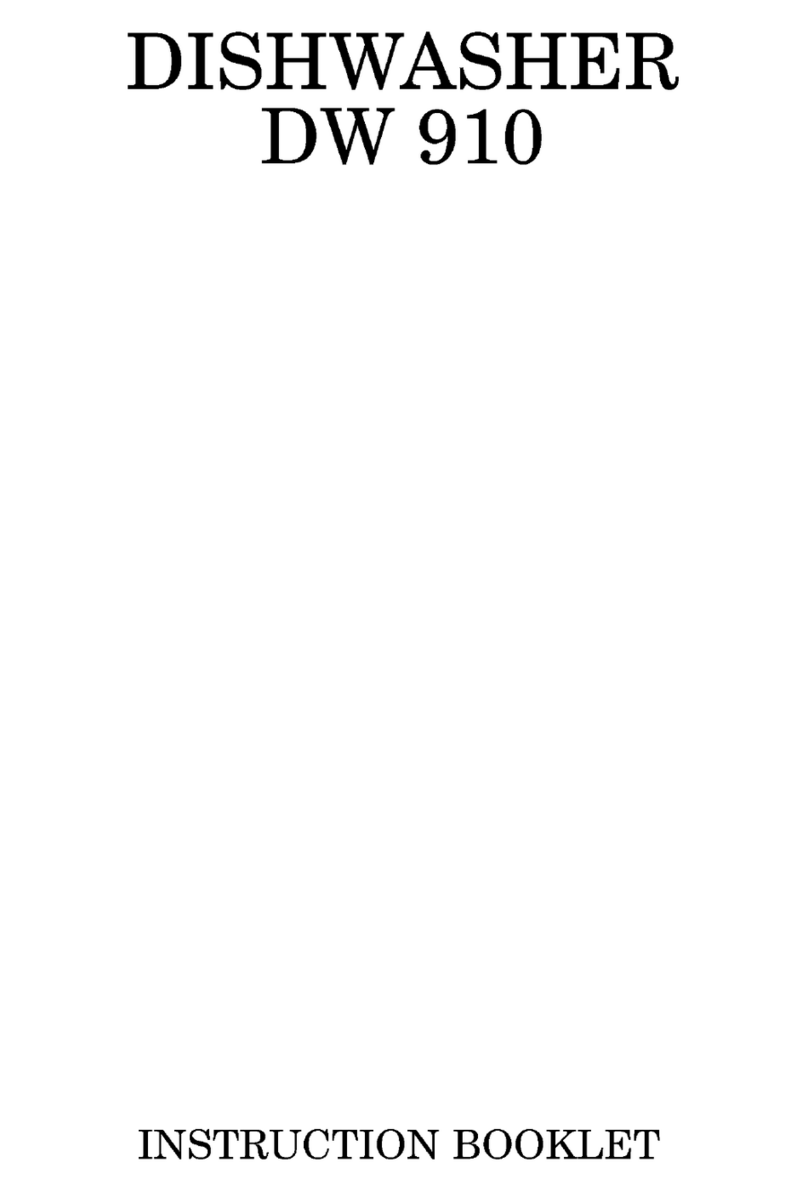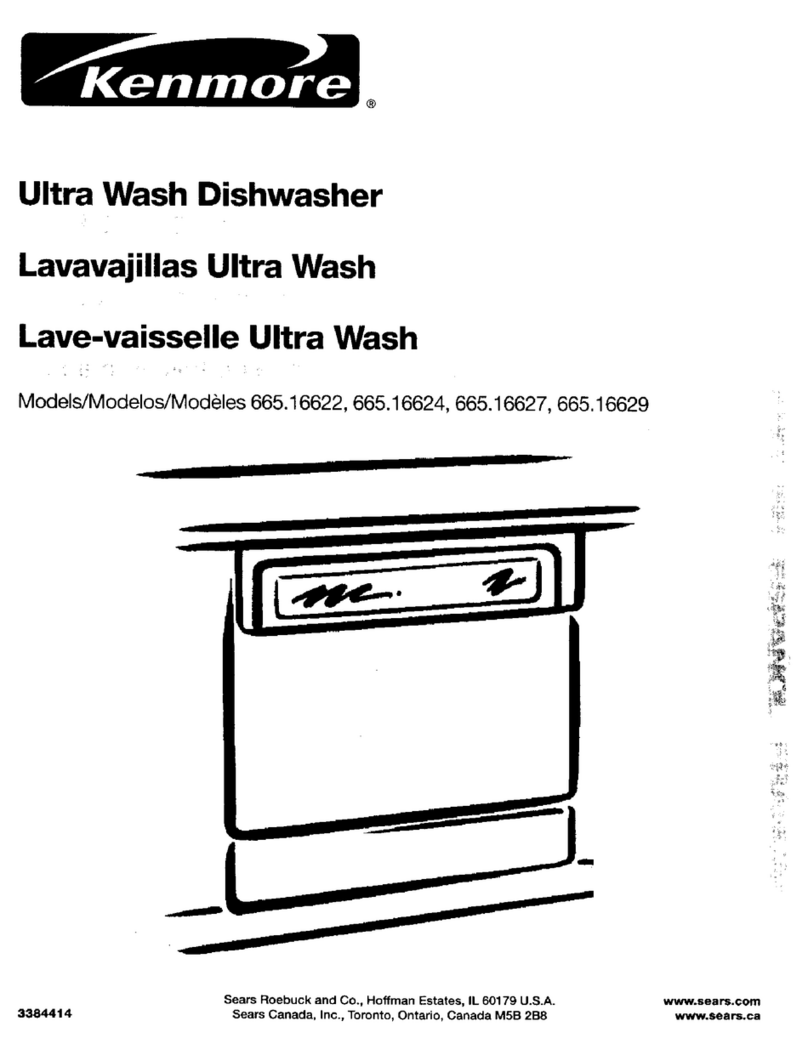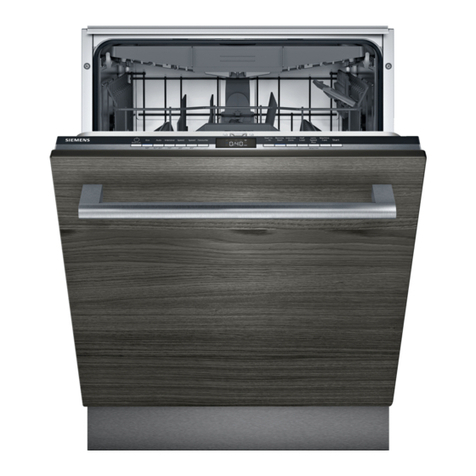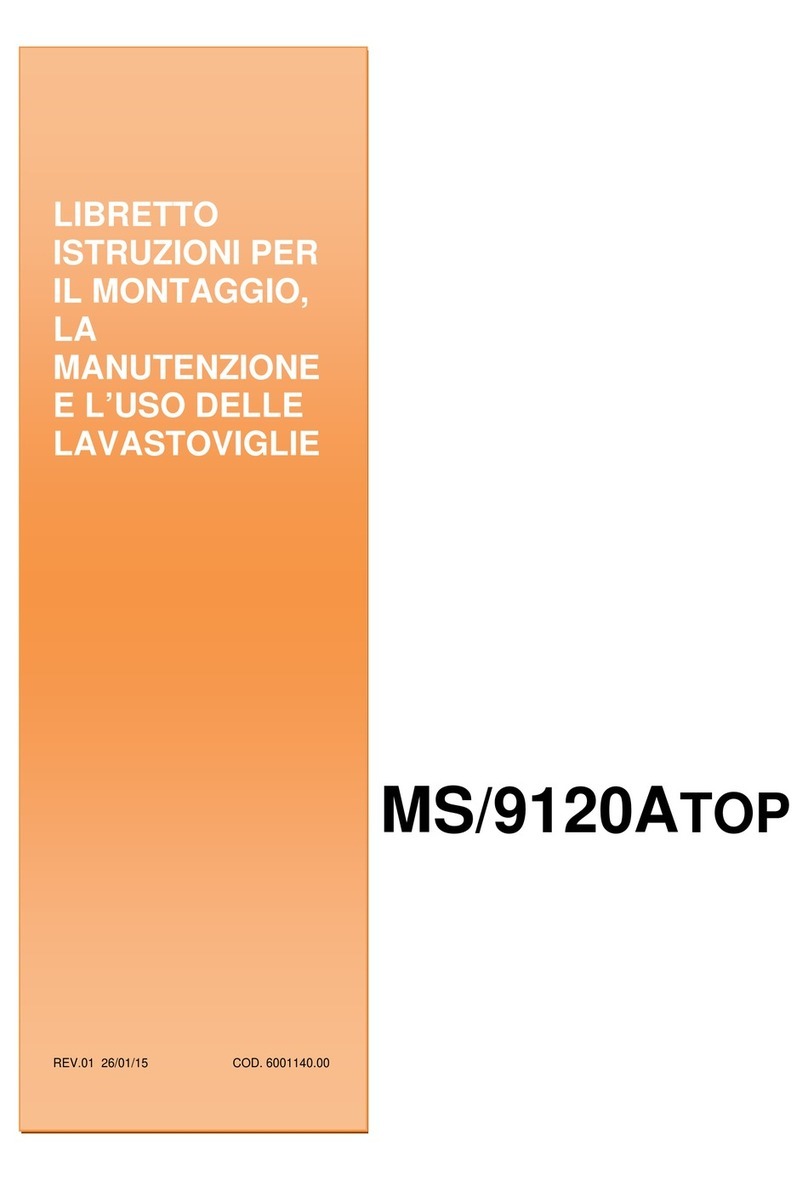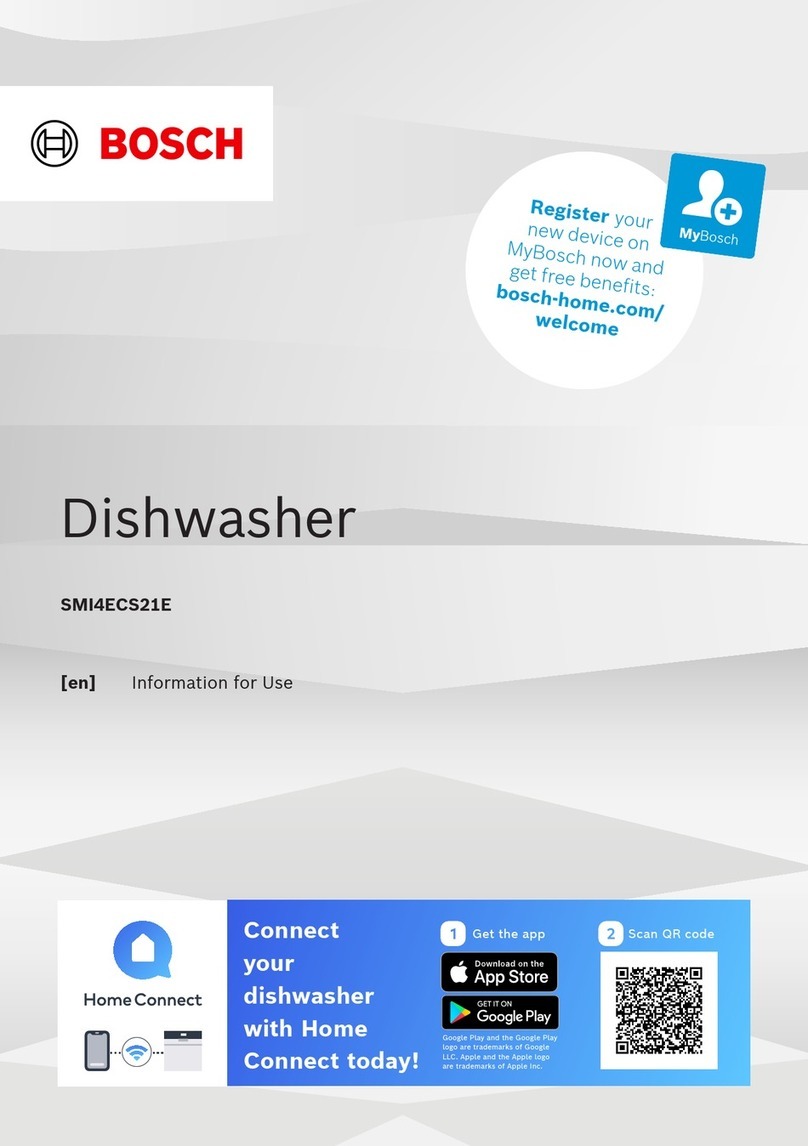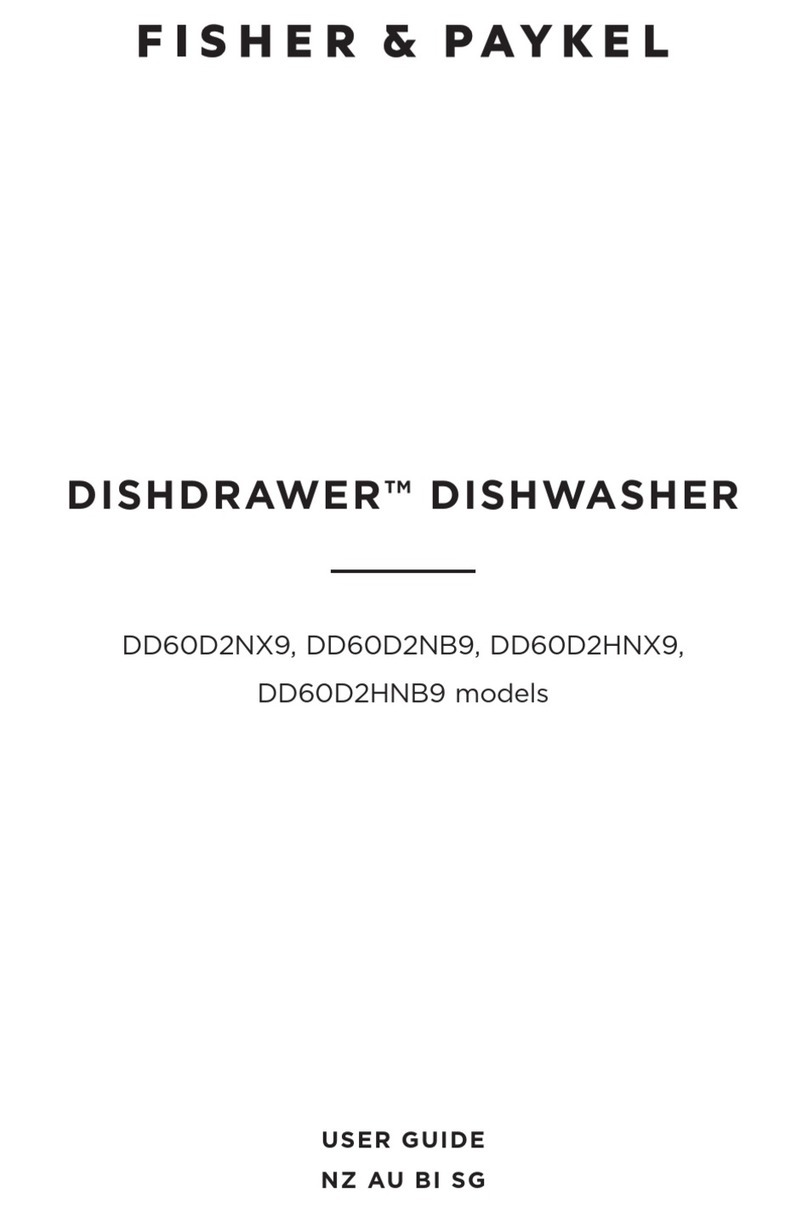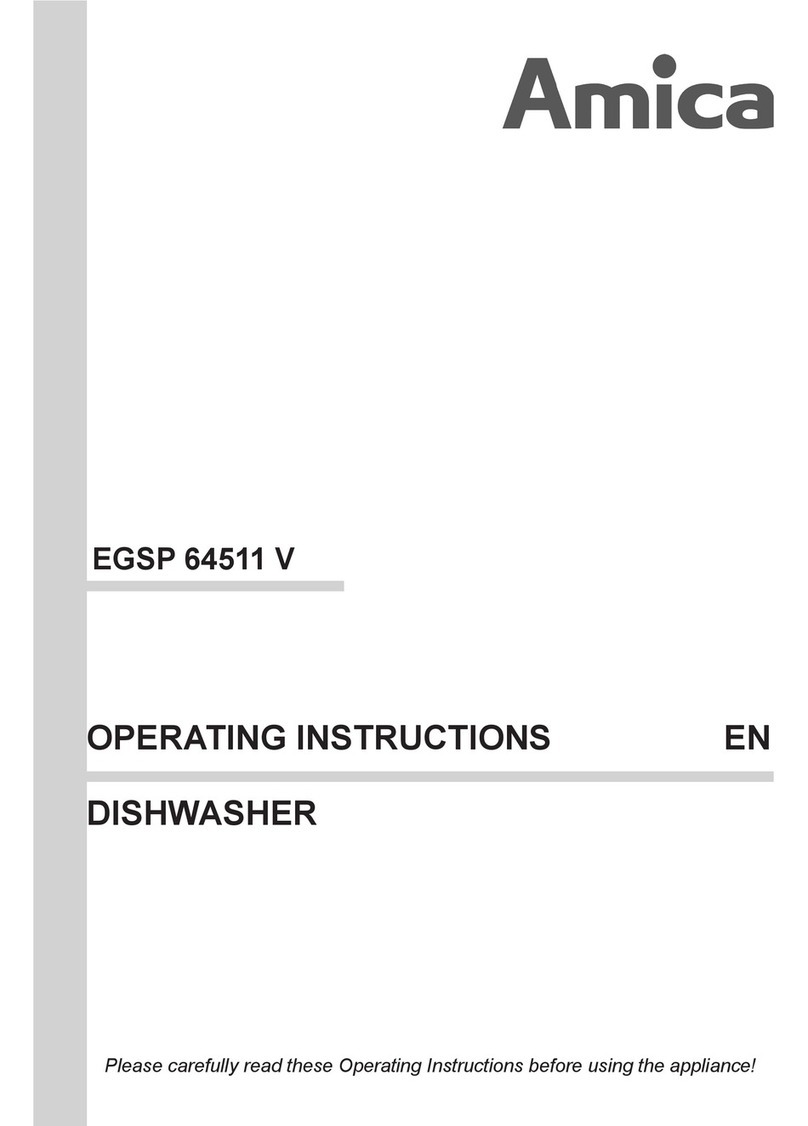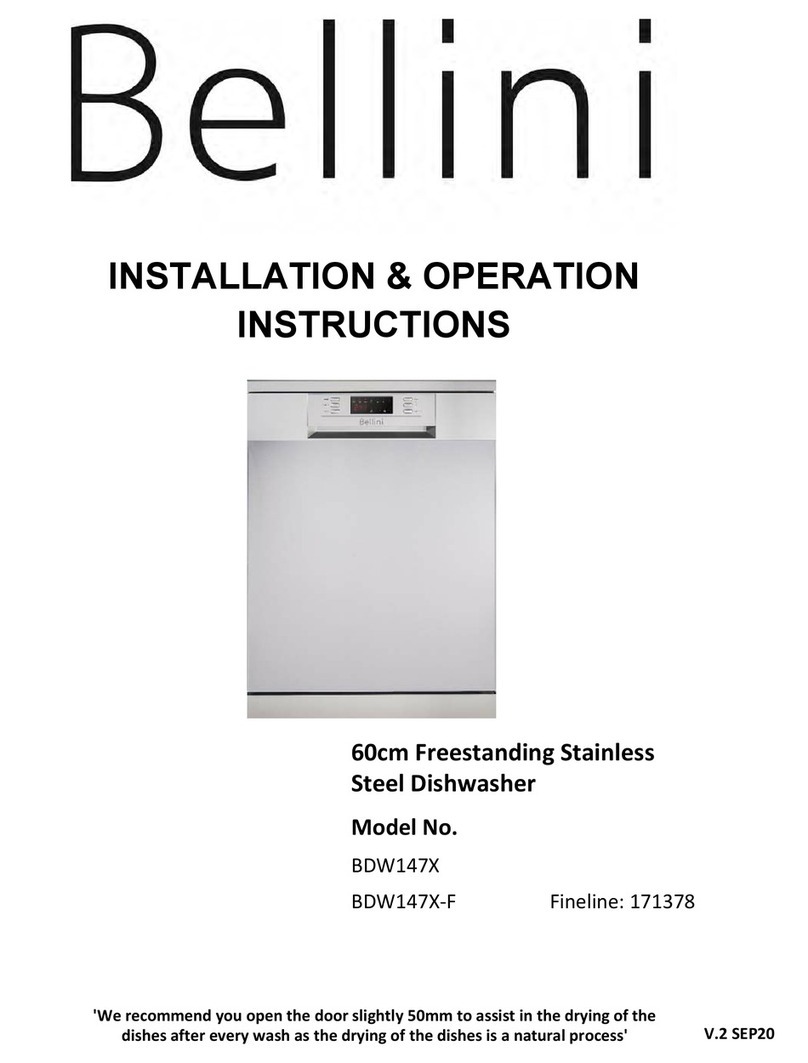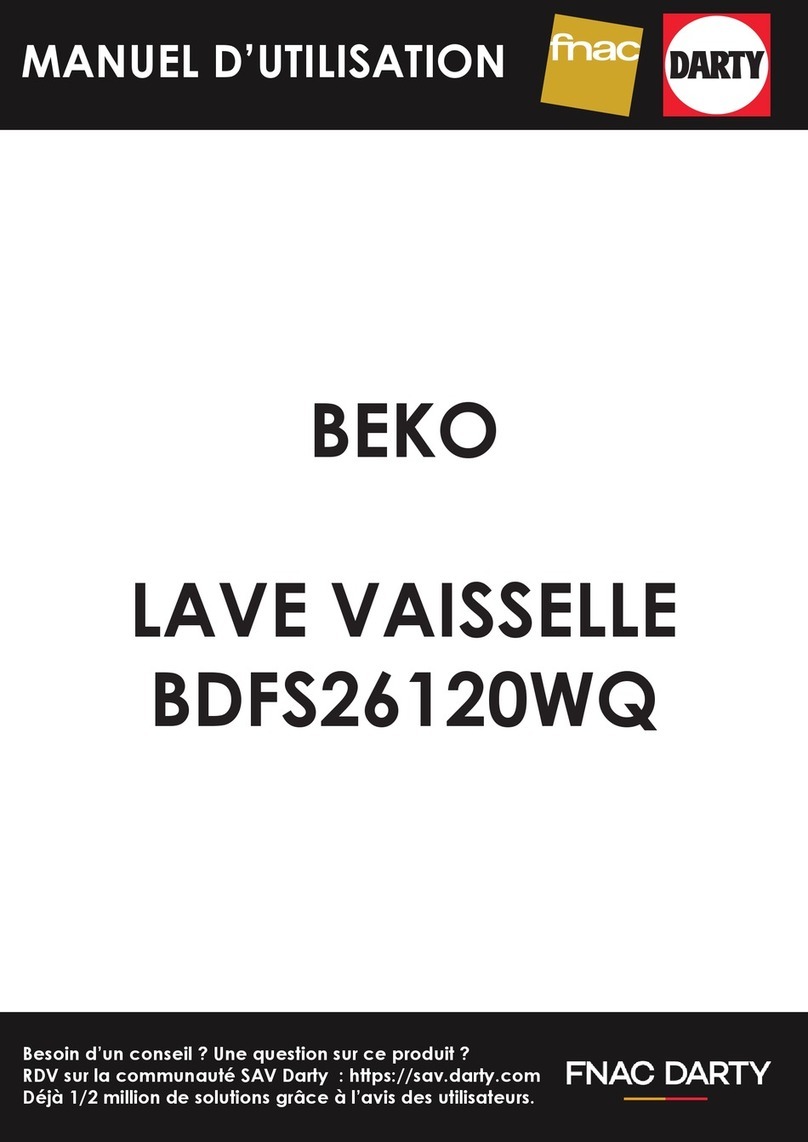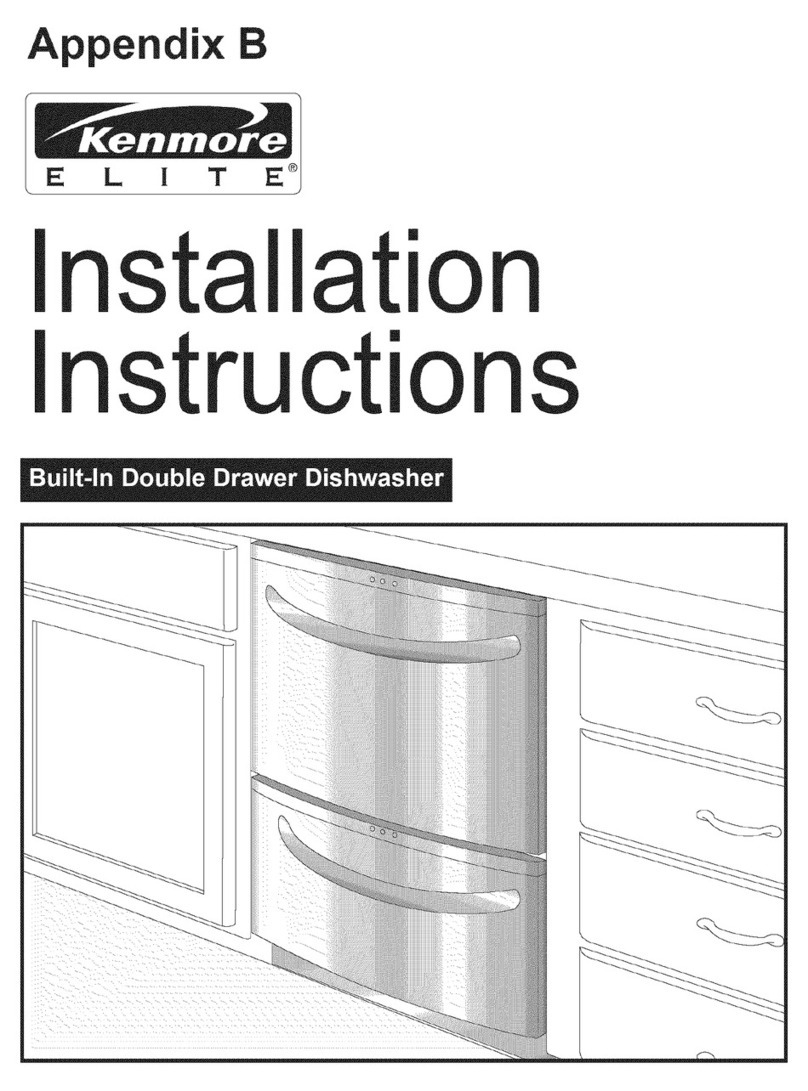
Classeq Pass Through Range - User Manual
8
Once the warewasher is in its final position, adjust the adjustable
feet to ensure the warewasher is stable, its weight is being
distributed equally, and it does not tilt more than 2 degrees in
any direction.
The warewasher should be placed in a location that allows the
electrical, supply water and waste water connections to be fitted
(►4.5.2).
When positioning the warewasher, ensure that the water inlet,
chemical tubes and drain hoses are not kinked or squashed. Care
must also be taken to ensure the warewasher does not rest on
any of its supply hoses / leads.
4.5 Site Requirements
4.5.1 Minimum space requirements
Refer to dimension drawing in Warewasher Specifications (►0).
Overall Width
- with 20mm clearance for Handle
Guide on each side of machine.
Overall Height
- with 50mm clearance above raised
Hood at minimum feet extension.
- with 50mm clearance above raised
Hood at maximum feet extension.
4.5.2 Machine services connections
Within 1.5m radius of point A,
maximum height from floor
700mm.
Within 1.8m radius of point B.
Within 1.3m radius of point C,
switch to be easily accessible.
4.6 Electrical Connection
4.6.1 Electrical supply
Electrical connections MUST be carried out in accordance with
local regulations. As a minimum Classeq recommends the
following are maintained:
All warewashers are connected via a residual current
device (RCD) or earth leakage protection device.
A means for disconnection that has all poles separation
of more than 3 mm must be incorporated in the fixed
wiring in accordance with wiring rules.
Connect to an equipotential conductor, connection stud
located at rear of the warewasher, this is in addition to
the earthed electrical supply.
Prior to connecting the warewasher, ensure voltage and
supply fuse comply with rating plate.
4.6.2 Mains cable connection
Prior to connecting the warewasher,
ensure that the available electrical
outlet voltage and the supply fuse
comply with the rating of the
warewasher. For the electrical rating of
the warewasher refer to the rating
plate.
Contact your distributor, a qualified electrician, or Classeq if you
are unsure how to check this.
The electrical supply must incorporate a disconnection device
(circuit breaker / fuse) that complies with local and national
regulations.
The warewasher must be connected directly to the mains
electricity using the mains electrical cable provided. DO NOT use
electrical extension lead(s) to supply power to the warewasher.
DANGER!
All mains electrical work MUST be carried out in
accordance with local and national regulations
by a qualified electrician.
4.6.3 Electrical connection specification
When hard wiring the warewasher into the mains outlet, use a
Multimeter or voltmeter to ensure that the connection point is
electrically isolated before attempting to make the connections.
4.6.4 Electrical cable specification
If the mains electrical supply cable is damaged or has
deteriorated, it MUST be replaced by a cable or cord assembly
supplied by Classeq, its service agents or suitably qualified
persons in order to avoid hazards, and be to the following





















